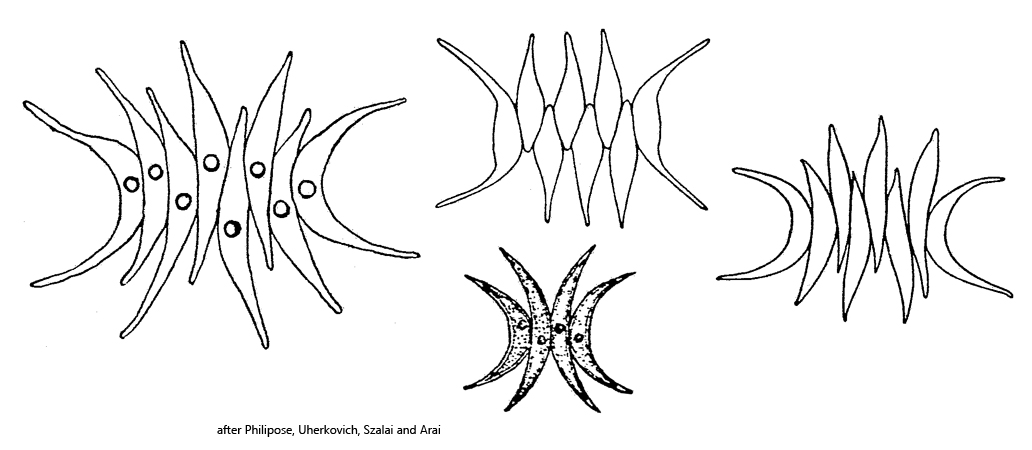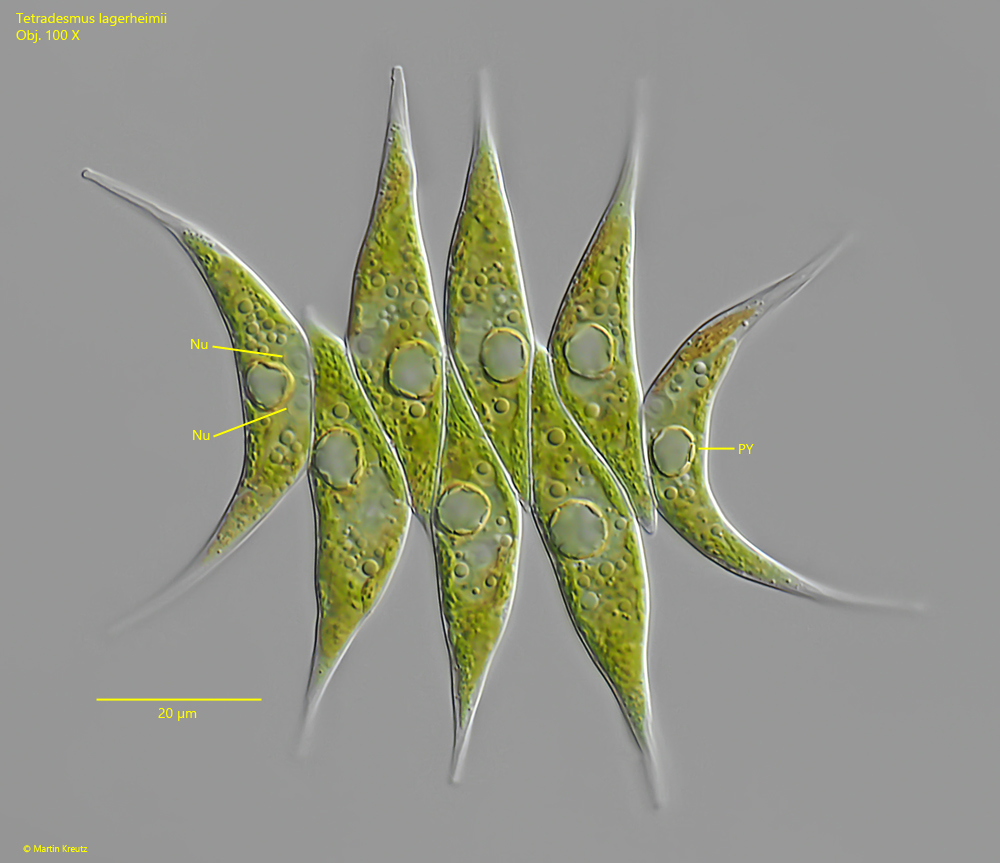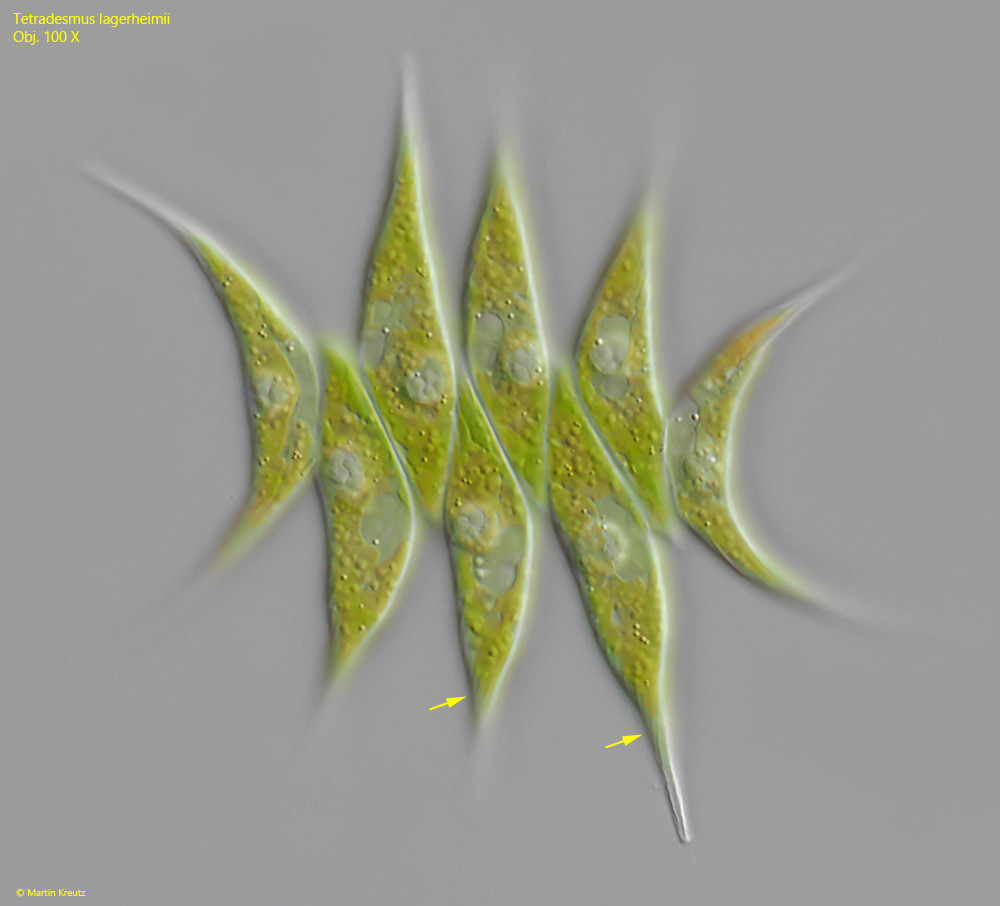Tetradesmus lagerheimii
(M. J. Wynne & Guiry, 2016)
Most likely ID: n.a.
Synonyms: Scenedesmus acuminatus, Selenastrum acuminatum, Acutodesmus acuminatus, Tetradesmus acuminatus
Sampling location: Pond of the waste disposal plant Constance
Phylogenetic tree: Tetradesmus lagerheimii
Diagnosis:
- alternating or linear coenobia of 2–8 cells, arranged side by side
- cells 9.6–72 µm long, width 1.5–9 µm
- cells touch each other along about one fifth of their length
- inner cells asymmetrically spindle-shaped with gradually tapered and rounded ends
- marginal cells arc-shaped, also with gradually tapered and rounded ends
- tapered ends of the cells are hyaline
- cell surfaces smooth
- one pyrenoid per cell

I find Tetradesmus lagerheimii in large numbers in the plankton of the pond of the waste disposal company Constance. There it seems to have good growth conditions, because the size of the coenobia in my polulation is at the upper end of the range given for this species.
The species was originally described as Scenedesmus acuminatus by Lagerheim, but was placed in Tetradesmus by Wynne & Guiry in 2016. It is possible to confuse Tetradesmus lagerheimii with the similar species Tetrademus dimorphus (Syn. = Scenedesmus dimorphus). However, Tetradesmus lagerheimii has much longer, tapered cell ends and the outer cells are more strongly, arcuately curved in Tetradesmus lagerheimii (s. fig. 1).
The single-cells in the coenobia in my population were on average 50 µm long and clearly alternatingly arrganed. This can be seen in the arrangement of the pyrenoids in the coenobia, which are arranged in a zig-zag pattern rather than in a line (s. fig. 1). Many of the single cells in the coenobia had 2 nuclei (s. fig. 1). The literature does not mention the nuclei in any way, but I found this circumstance astonishing. I found the surface of the cells to be smooth as described in the literature, but I could see a delicate but distinct spiral striation at the cell ends (s. fig. 2), which is not mentioned in the literature.

Fig. 1: Tetradesmus lagerheimii. L = 54 µm (of coenobium). A coenobium of 8 alternating cells. In some cells 2 nuclei (Nu) are present. The pyrenoid (PY) in each cell is covered with a thin layer of starch grains. The inner cells have a length of 48–52 µm. Obj. 100 X.

Fig. 2: Tetradesmus lagerheimii. L = 54 µm (of coenobium). The same coenobium shown in fig. 1 with focal plane on the smooth cell surface. Note the slight spirally striation of the tapered ends of the cells (arrows). Obj. 100 X.